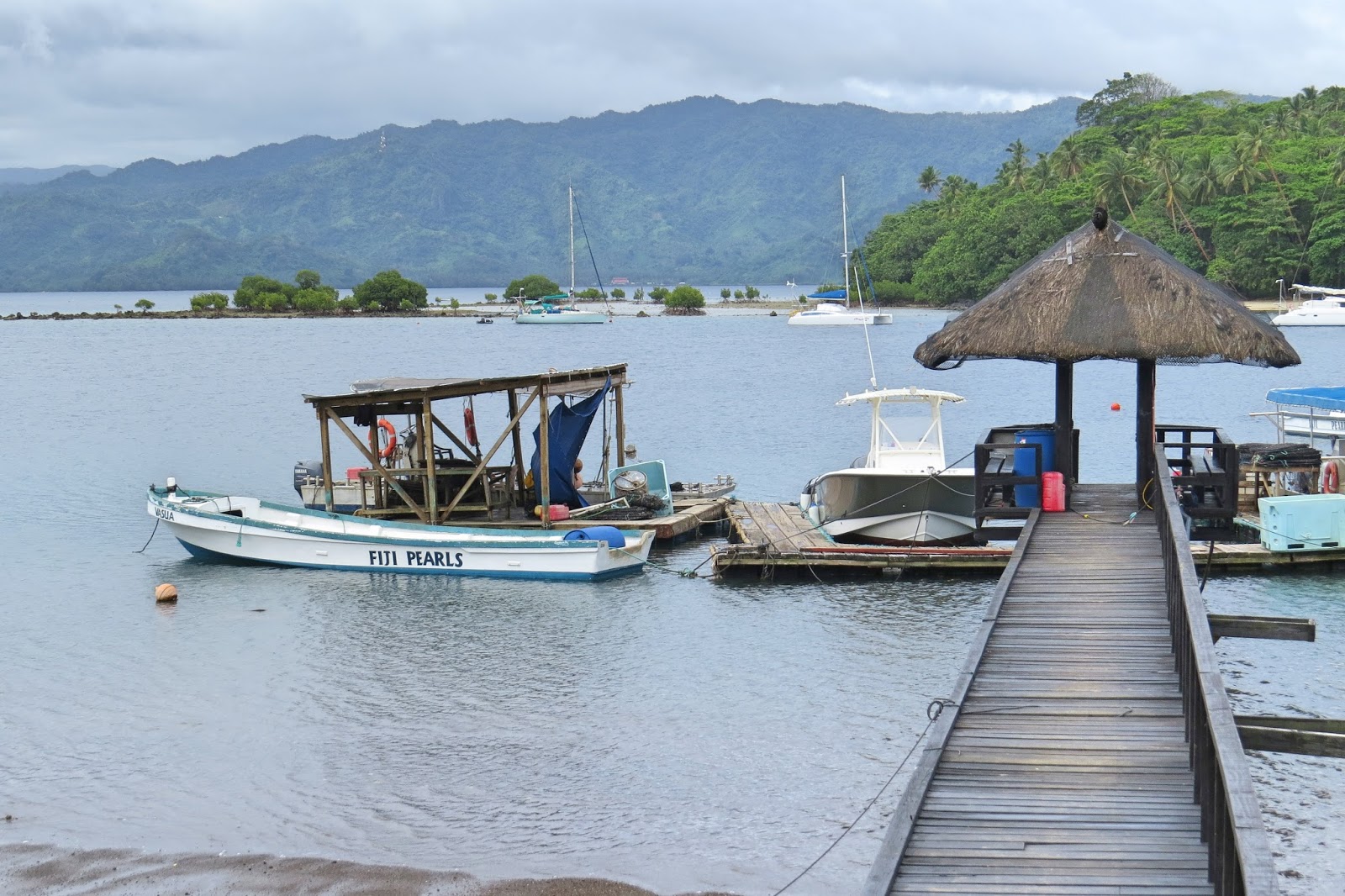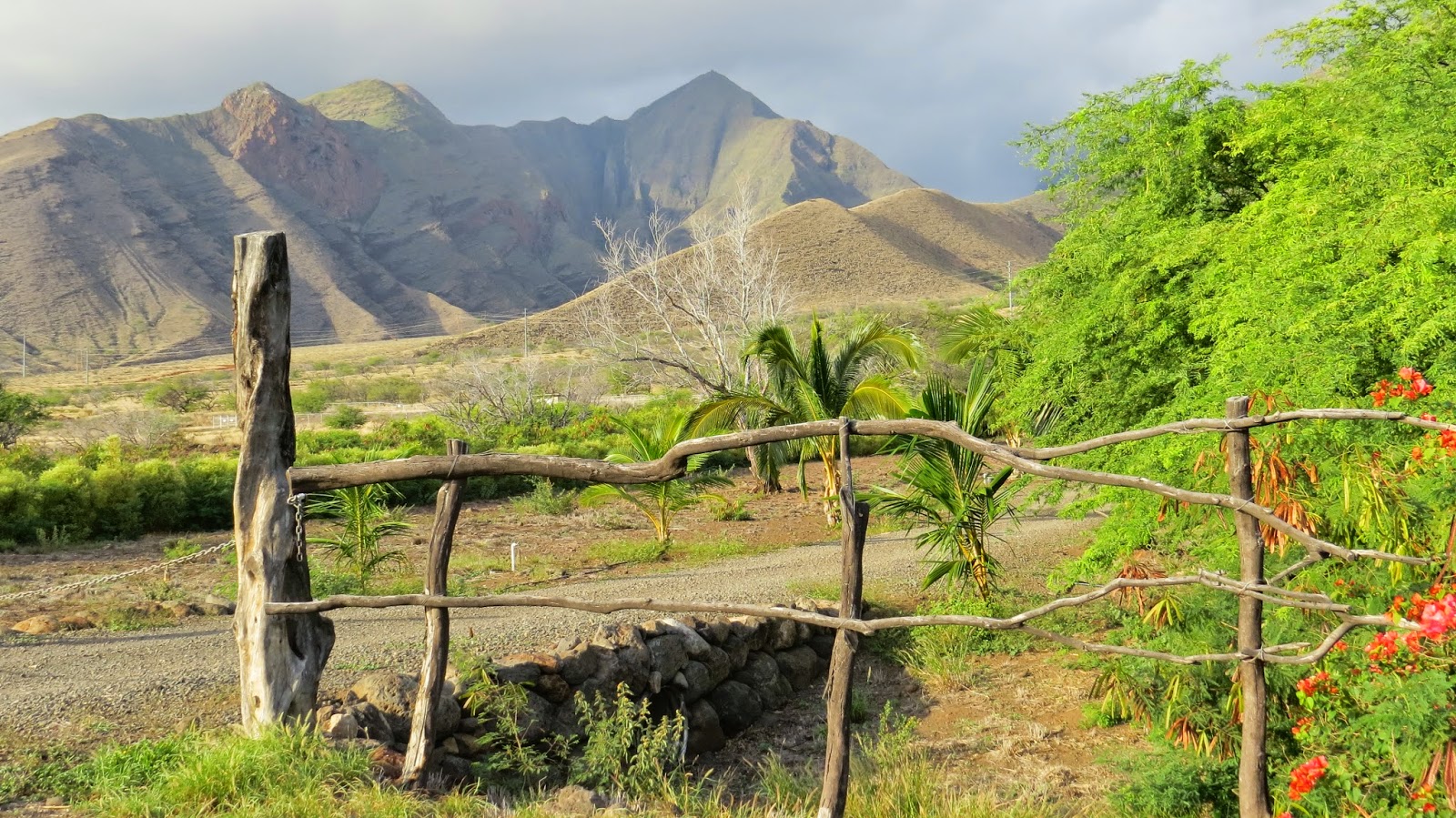 |
| Savusavu Bay and Nawi Island, in Vanua Levu, Fiji from a site atop a hill in the village. |
Today’s photos are from this date in 2015 while winding down our three-month stay on the island of Vanua Levu in the village of Savusavu. Please click here for details.
We haven’t been outdoors in eight months, except when I went to an ATM a few months ago when we needed cash for medication we’d ordered and about six months ago when I went outside to collect a package from Amazon India from the security guard the gate.
 |
| The hot springs where many locals cook their potatoes and root vegetables. |
Since that time, for added precautions, we’ve asked the front desk to deliver the few packages we receive directly to our room. We’d be more than willing to spend time outdoors, but it would only be in the parking lot in the bright hot sun with the awful air quality per today’s report below from this site.
FORECAST
Mumbai air quality index (AQI) forecast
| Day | Pollution level | Weather | Temperature | Wind |
|---|---|---|---|---|
| Monday, Nov 30 |
Unhealthy 153US AQI
|
|||
| Tuesday, Dec 1 |
Unhealthy 159US AQI
|
|||
| Wednesday, Dec 2 |
Unhealthy 163US AQI
|
|||
| Today |
Unhealthy 164US AQI
|
 |
84.2°77° |
|
While touring India many moons ago, the air quality ratings were often listed as “dangerous.” It was tough to breathe at that time. Although it may be easier now, why go out into that? After all, I have asthma and heart disease, both inflammatory conditions that can be exacerbated by severe smog.
 |
| The view from our veranda in Korovesi, Savusavu, Fiji. |
Thank goodness we’re taking generous doses of Vitamin D3, but our lack of sun exposure may not be much worse than when we lived in Minnesota during the icy cold winter months and seldom spent much time outdoors, other than walking our dogs. Under those circumstances, exposed skin absorbs Vitamin D from the sun, not when bundled up in warm clothing.
We’ve been deluding ourselves into thinking that indoor air in this air-conditioned hotel room in Mumbai is any better than the outdoors. After reading several articles online over these past many months, it’s evident why we’re both sneezing all day long. Tom has no allergies, and yet he sneezes often. It’s due to poor air quality in buildings, including hotels in India, especially in a highly-populated area like Mumbai. See this article here about indoor air in India.
 |
| The bay where many sailors moor their sailboats. |
We’ve asked the maintenance staff to change the air-con filter a few times, but that didn’t seem to help. Besides, sitting in this tiny room, day after day, month after month, an enormous amount of dust accumulates from our skin, shedding, a disgusting thought but a reality. Dust mites are a real thing, although an awful idea. See here for details.
With people all over the world stuck inside their homes for extended periods during COVID-19 lockdowns, it wouldn’t be surprising that many with dust allergies may have suffered more than during “normal times.” I suppose if we’d lived in a house staying indoors for many months, we’d probably have had our house fumigated for dust mites when the lockdown ended.
 |
| The busy village hops with business most days. |
Ah, the challenges of living under these circumstances aren’t going away anytime too soon. The WiFi has been going out at least once an hour over the past two days. We’ve reported this several times to the front desk, who reports,” We’re working on it.” We had to stop streaming shows last night when Netflix and Hulu kept stopping with streaming issues.
Then, of course, walking in the corridors continues to be quite a challenge with so many guests staying on our floor, not wearing masks, slamming doors in the middle of the night, and having loud parties throughout the night that have kept us awake over many nights in the past few months.
 |
| Tom, in front of a giant palm frond on the property. |
We can’t get out of here soon enough. Dare I mention…40 more days?
Stay well.
Photo from one year ago today, December 3, 2019:
 |
| In 2016, we arrived in Penguin, Tasmania, where we stayed for six weeks. This is the view from the living room window of the beautiful holiday home we rented. It was a delightful six weeks and remained one of Tom’s favorite places in the world. For more about the year-ago post, please click here. |







































































